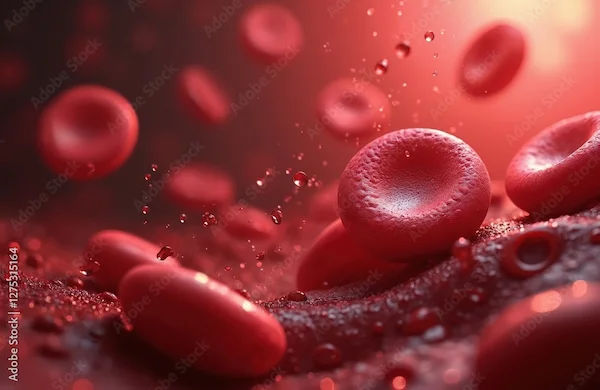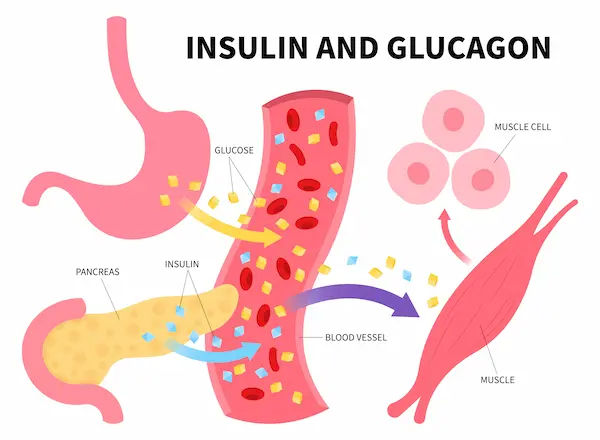Micronutrient Deficiencies in Children: A Parent’s Guide
Learn the signs, causes, and health effects of micronutrient deficiencies in children, plus tips to ensure proper nutrition.

Written by Dr. D Bhanu Prakash
Reviewed by Dr. Dhankecha Mayank Dineshbhai MBBS
Last updated on 29th Sep, 2025

Introduction
As a parent, you pour your heart into ensuring your child is healthy and happy. But sometimes, despite your best efforts, they might be experiencing a hidden form of hunger: micronutrient deficiency. This isn't about a lack of food, but a lack of the essential vitamins and minerals their growing bodies desperately need. These tiny nutritional powerhouses are crucial for everything from bone development and brain function to a robust immune system. This guide will demystify micronutrient deficiency in kids, helping you understand the root causes, recognise the subtle signs, and learn practical steps to ensure your child gets the balanced nutrition they need to thrive.
What Exactly Are Micronutrients and Why Do They Matter?
Think of macronutrients (proteins, carbs, and fats) as the building blocks and fuel for your child's body. Micronutrients, on the other hand, are the skilled workers who use those blocks to actually construct the building and keep it running smoothly. They are vitamins (like A, B, C, D, E, K) and minerals (like iron, zinc, calcium, iodine) required in small amounts, but their impact is enormous. A shortage in even one can have a cascading effect on a child's health. For instance, iron is vital for carrying oxygen in the blood, affecting energy levels and cognitive function. Vitamin D and calcium work in tandem to build strong bones and teeth. Zinc is a behind-the-scenes hero for immune response and cell growth. Without adequate levels, children can face stunted growth, frequent illnesses, learning difficulties, and chronic fatigue. Understanding paediatric nutrition is the first step in preventing these issues.
The Top 5 Micronutrient Deficiencies in Kids
While any vitamin or mineral can be lacking, certain deficiencies are more prevalent in the paediatric population. Here’s a breakdown of the most common ones and what specifically leads to them.
1. Iron Deficiency: The Energy Zapper
Iron deficiency is the most common nutritional deficiency worldwide, and a leading cause of anaemia in children. It's crucial for making hemoglobin, the protein in red blood cells that carries oxygen.
Primary Causes of Iron Deficiency:
Inadequate Dietary Intake: This is the biggest culprit, especially during periods of rapid growth (infancy and adolescence). Picky eaters who avoid iron-rich foods like red meat, fortified cereals, beans, and spinach are at high risk.
Premature Birth: Babies born early miss out on the iron stores they accumulate in the last trimester.
Excessive Cow's Milk Consumption: Drinking too much cow's milk before age can irritate the intestinal lining, causing microscopic blood loss, and it's also a poor source of iron, displacing iron-rich foods from the diet.
2. Vitamin D Deficiency: The Sunshine Vitamin Shortfall
Vitamin D is essential for calcium absorption and bone health. Surprisingly, it's very common, even in sunny climates.
Primary Causes of Vitamin D Deficiency:
Limited Sun Exposure: Modern lifestyles involving more indoor activities, along with the legitimate use of sunscreen, significantly reduce the skin's ability to synthesise Vitamin D.
Dark Skin Pigmentation: Higher levels of melanin reduce the skin's efficiency in producing Vitamin D from sunlight.
Dietary Gaps: Very few foods naturally contain Vitamin D (e.g., fatty fish, egg yolks). While milk is often fortified, many children don't drink enough to meet their needs.
3. Vitamin A Deficiency: The Immunity and Vision Guardian
Vitamin A is vital for good vision, a healthy immune system, and cell growth.
Primary Causes of Vitamin A Deficiency:
Lack of Diverse Diet: This deficiency is strongly linked to diets lacking in colourful fruits and vegetables. Children who refuse orange and yellow produce (carrots, sweet potatoes, mangoes) and dark leafy greens are particularly vulnerable.
Malabsorption Issues: Conditions like Celiac disease or cystic fibrosis can impair the absorption of fat-soluble vitamins like A.
4. Zinc Deficiency: The Growth and Repair Mineral
Zinc plays a role in growth, wound healing, and taste perception. A zinc deficiency can often be linked to picky eaters.
Primary Causes of Zinc Deficiency:
Plant-Based Diets without Proper Planning: The zinc in plant sources (beans, nuts) is not as easily absorbed as the zinc from animal sources (meat, dairy). Vegan and vegetarian diets need careful planning to include enough zinc.
Diarrhoeal Diseases: Frequent loose stools can lead to significant zinc loss from the body.
5. Calcium & Vitamin D Combo: The Bone-Building Team
Calcium is the primary mineral in bones. Without enough, bones can become weak. Its absorption is dependent on Vitamin D.
Primary Causes of Calcium Deficiency:
Avoidance of Dairy: Children with lactose intolerance or milk allergies, or those who simply dislike milk, yoghurt, and cheese, may not get enough calcium if alternative sources aren't incorporated.
High Consumption of Soda: Phosphoric acid in some sodas can interfere with calcium absorption.
Health topic carousel:
Doctor's speciality: Paediatrics
Text: Consult a Paediatrician for the best advice
Beyond Picky Eating: The Root Causes of Deficiencies
While a poor diet is a primary driver, other factors can contribute significantly to micronutrient deficiency in children.
Dietary Causes: It's Not Just About Quantity
A child might eat plenty of food but still lack nutrients if their diet consists mainly of processed snacks, sugary drinks, and refined carbohydrates. These "empty calories" provide energy but lack essential vitamins and minerals. The over-reliance on a few "safe" foods common in picky eating also limits nutritional diversity.
Lifestyle & Environmental Factors
As mentioned, limited outdoor play reduces Vitamin D synthesis. Additionally, families living in "food deserts" with limited access to fresh fruits and vegetables face a structural barrier to providing a nutrient-rich diet.
Underlying Health Conditions
Certain medical conditions are major risk factors. Gastrointestinal disorders like Crohn's disease or Celiac disease impair nutrient absorption. Food allergies can restrict entire food groups, while chronic illnesses can increase the body's metabolic demands for certain nutrients.
Spotting the Signs: Symptoms of Micronutrient Deficiency
The symptoms can be vague and easily mistaken for other issues. Be on the lookout for:
Fatigue and weakness: A classic sign of iron deficiency anaemia.
Frequent illnesses: A sign of a compromised immune system, potentially linked to zinc or Vitamin A deficiency.
Pale skin: Often associated with iron deficiency.
Poor growth or short stature: Can indicate a chronic deficiency in zinc, vitamin D, or overall calories.
Delayed wound healing: Linked to zinc and Vitamin C deficiency.
Poor appetite: Ironically, a zinc deficiency can reduce taste perception and appetite, creating a vicious cycle.
Bone pain or muscle weakness: Can be a sign of severe Vitamin D or calcium deficiency.
If you notice a cluster of these signs of vitamin deficiency in your toddler or older child persisting, it's important to investigate further.
Prevention is Key: Building a Micronutrient-Rich Diet
The best defense is a proactive offense focused on a varied, whole-foods diet.
Offer a Rainbow: Encourage a wide variety of colourful fruits and vegetables daily.
Include Lean Proteins: Incorporate iron-rich sources like lean meat, poultry, fish, beans, and lentils.
Choose Fortified Foods: Many cereals, milks, and breads are fortified with iron, Vitamin D, and B vitamins.
Smart Snacking: Replace processed snacks with nuts, seeds, yoghurt, or cheese.
Lead by Example: Children are more likely to try new foods if they see their parents enjoying them.
When to Seek Help: Diagnosis and Professional Guidance
If you suspect a deficiency, don't start supplementation without professional advice. Over-supplementing can be harmful. The first step is to talk to your paediatrician. They can assess your child's diet, growth charts, and symptoms. If necessary, they may recommend a blood test to check specific levels, such as iron or Vitamin D.
If symptoms persist beyond two weeks, consult a doctor online with Apollo24|7 for further evaluation. A paediatrician can provide personalised guidance. Apollo24|7 offers a convenient home collection for tests like vitamin panels or a Complete Blood Count (CBC) to check for anaemia, making the diagnostic process smoother for you and your child.
Health topic carousel:
Lab Test: Apollo Vitamin Check - Basic, and CBC Test (Complete Blood Count)
Text: Get Your Health Assessed
Conclusion: Nourishing a Healthy Future
Navigating your child's nutritional needs can feel daunting, but knowledge is power. Understanding the common culprits behind micronutrient deficiencies empowers you to make informed choices. By focusing on a diverse, nutrient-dense diet and being mindful of the risk factors, you can significantly reduce your child's chances of experiencing a deficiency. Remember, you are not alone in this journey. Regular check-ups with a healthcare provider are essential for monitoring your child's growth and development. Paying attention to both their plate and their well-being is the greatest investment you can make in their long-term health.
Frequently Asked Questions (FAQs)
Below are the FAQs:
1. Can a picky eater get all the nutrients they need from food alone?
A. It can be challenging. While the goal is always food first, a severely limited diet may require a children's multivitamin to fill the gaps. Discuss this with your paediatrician to determine if it's necessary for your child.
2. What are the best foods for an iron-rich diet for a vegetarian child?
A. Excellent plant-based iron sources include fortified cereals, lentils, beans, tofu, spinach, and pumpkin seeds. Pairing these with a source of Vitamin C (like oranges or bell peppers) can significantly enhance iron absorption.
3. How can I increase vitamin D in my child naturally?
A. Aim for 10-15 minutes of midday sun exposure (without sunscreen) a few times a week. Dietary sources include fatty fish (salmon, tuna), egg yolks, and fortified milk or orange juice.
4. What is the recommended daily calcium intake for a growing child?
A. It varies by age. Toddlers (1-3 years) need about 700 mg, children (4-8) need 1,000 mg, and adolescents (9-18) need 1,300 mg. A cup of milk provides about 300 mg.
5. Are gummy vitamins as effective as traditional chewable vitamins?
A. They can be, but it's important to check the label. Some gummies lack certain nutrients like iron and calcium because they are difficult to formulate in a gummy texture. They also often contain added sugar.
Health topic carousel:
Doctor's speciality: Paediatrics
Text: Consult a Paediatrician for the best advice




